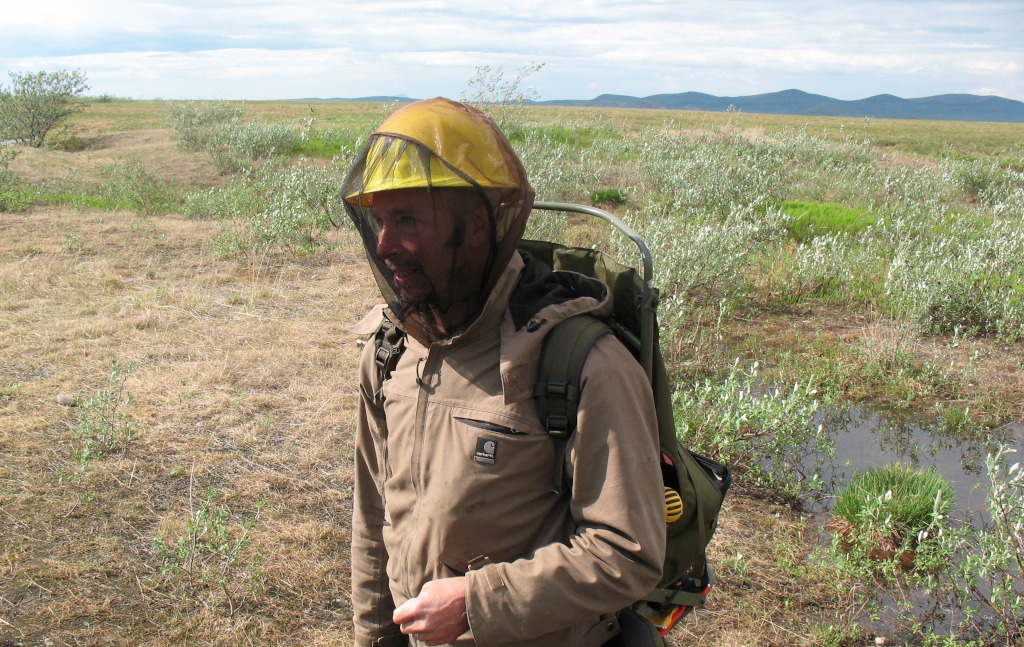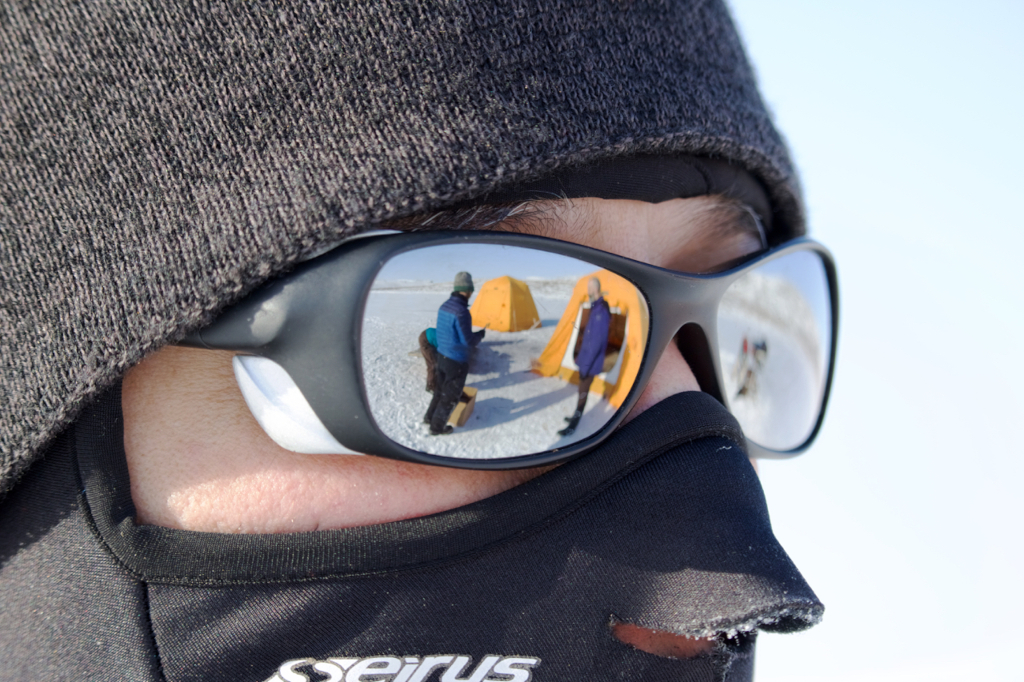Science party members are generally responsible for their own cold weather and field clothing.
Before departing, the team tries on cold weather gear to ensure proper fit and full inventory.
Fabrics to consider are Polar Plus Fleece, Polypropylene, Capilene, wool, and silk. Avoid cotton fabrics and jeans for remote field site use. Keep in mind that rain is a normal weather condition in Alaska. Be aware that during the summer season (May through September) the temperature can fluctuate between 10 and 90 degrees Fahrenheit depending upon the location.
Additionally, researchers should consider mosquito season (late May - early September), and bringing protective "bug shirts" and insect repellent.
For a general list of cold weather gear, review the recommendations below.
Recommended Cold Weather Gear:
- 1 each parka with hood
- 1 or 2 pair insulated/waterproof bibs (Carhartt)
- 1 pair wind pants, bib non-insulated
- 1 each pile/fleece jacket
- 1 each pile/fleece pants
- 1 each waterproof rain coat
- 1 each wind jacket with hood
- 2 pair expedition weight thermal top/bottoms
- 1 each sleeping bag
- 1 each sleeping bag liner
- 1 pair Sorel boots with spare liners (Glacier Model)
- 1 pair insulated rubber boots (Break up boots or Gum boots)
- 1 pair hiking boots
- 4-6 pair wool socks
- 1 each hat, musher style with earflaps
- 1 each hat, pile or wool cap
- 1 each neck gaiter
- 1-2 pair leather work gloves
- 1-2 pair insulated ski gloves
- 1-2 pair rubber gloves with cloth backside
- 1 pair expedition mitts
Recommended Personal Gear:
- 1 each towel
- 1 each day pack
- 1 pair sunglasses
- 1 each water bottle
- Chapstick
- Sunscreen
- Medications with copies of any prescriptions
- Batteries
- Insect headnet
- Insect repellent (DEET)
- Reading material
- Toiletries

Photo by: Tracy Dahl



